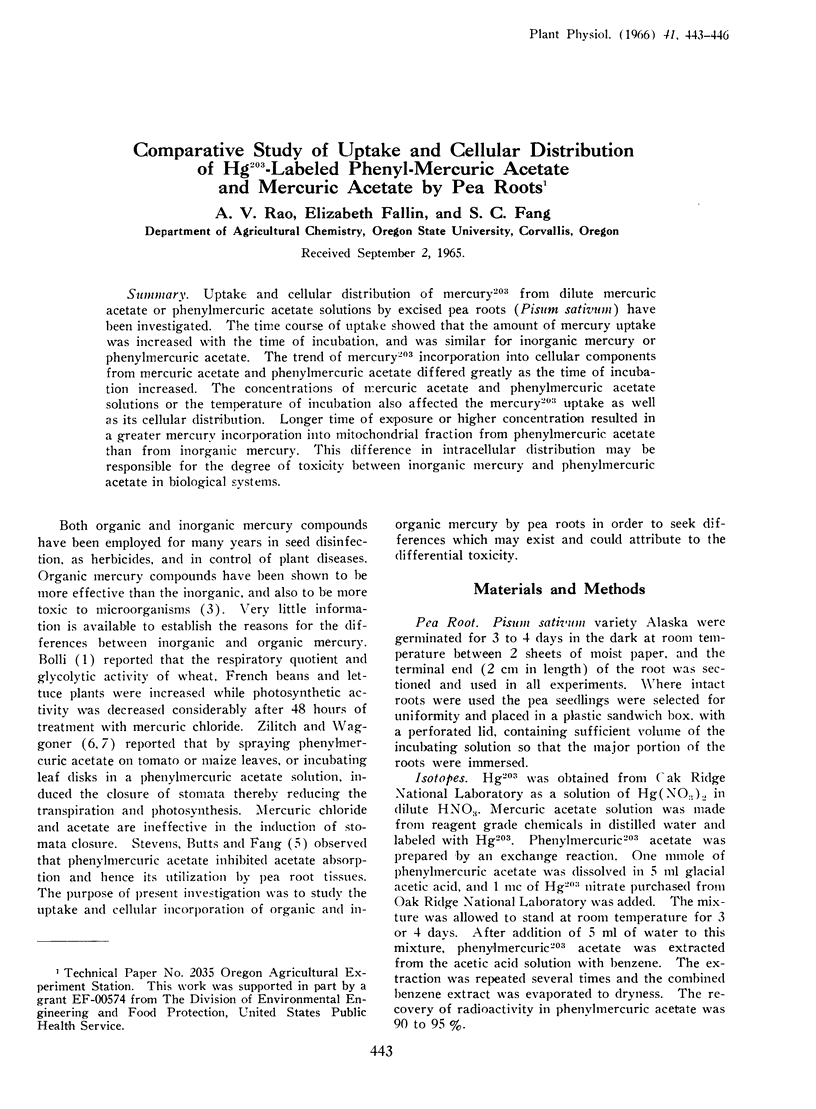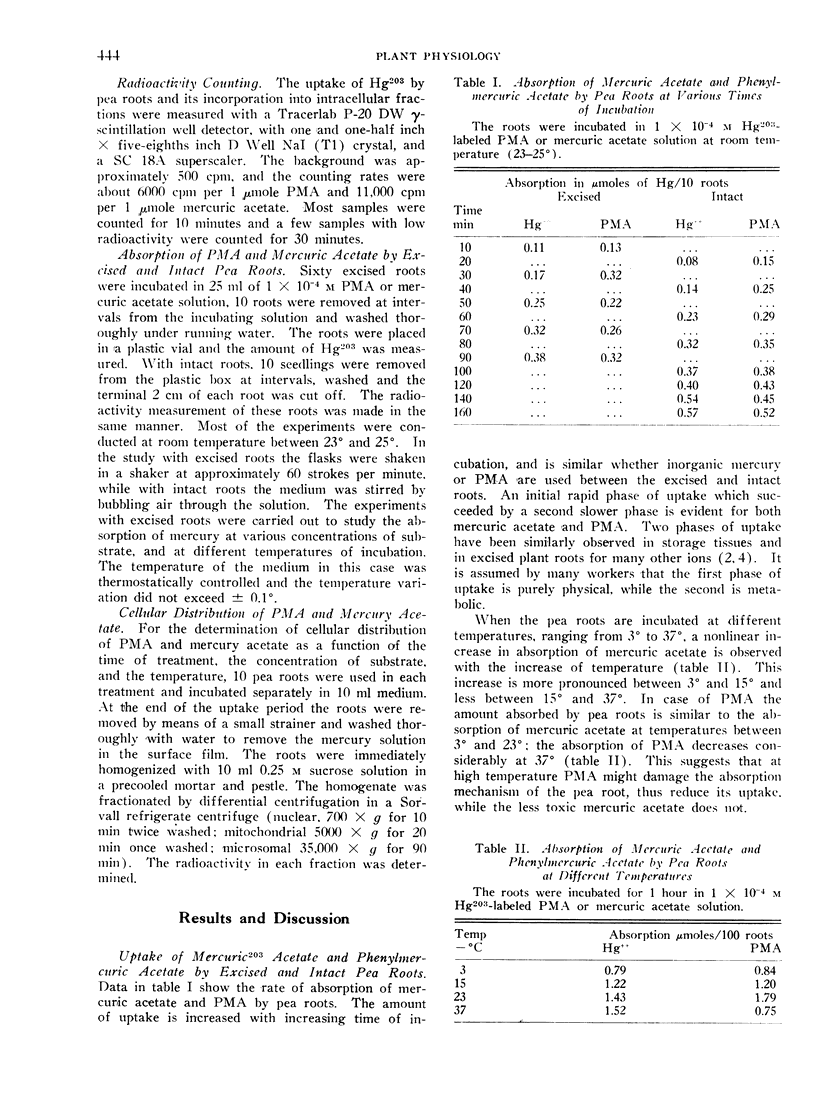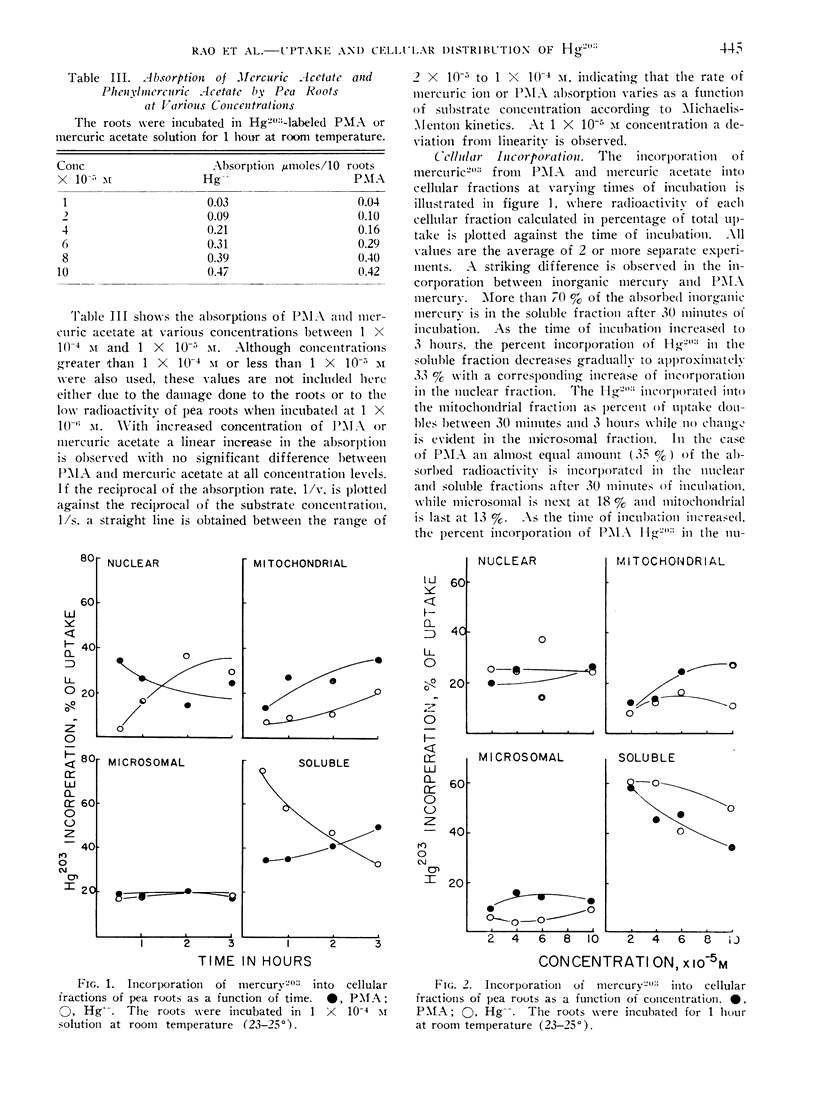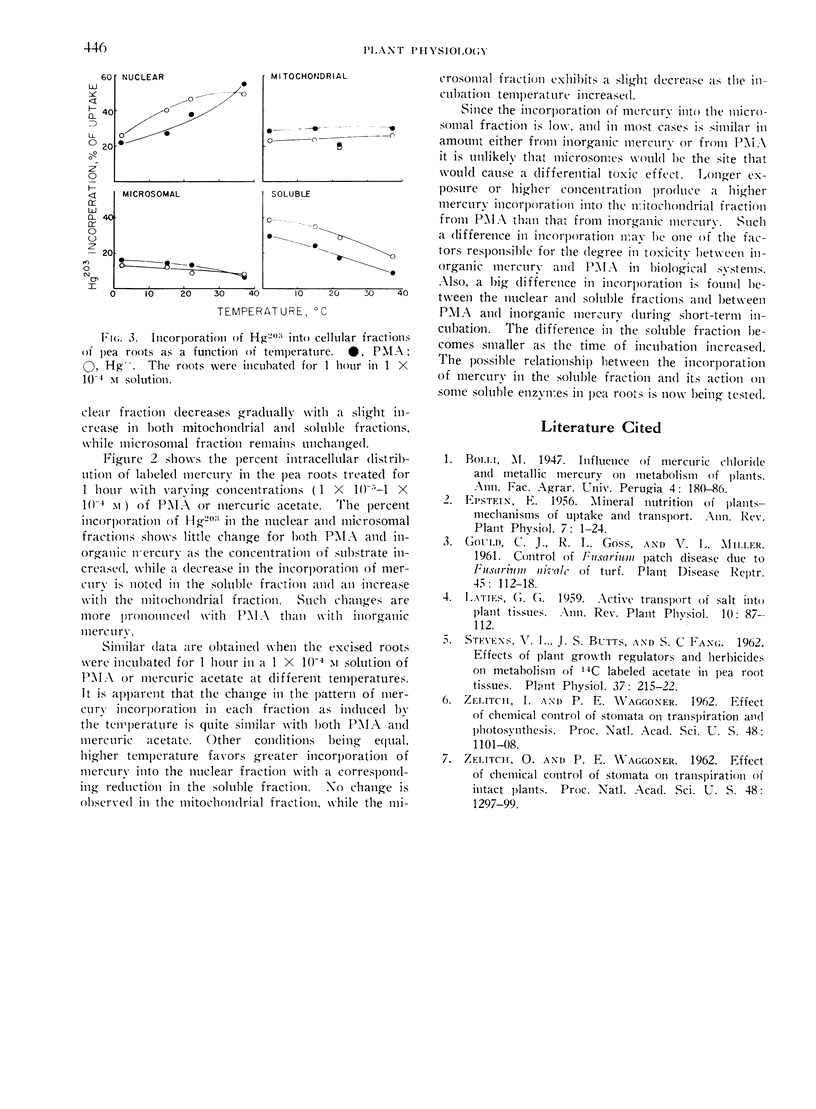Abstract
Uptake and cellular distribution of mercury203 from dilute mercuric acetate or phenylmercuric acetate solutions by excised pea roots (Pisum sativum) have been investigated. The time course of uptake showed that the amount of mercury uptake was increased with the time of incubation, and was similar for inorganic mercury or phenylmercuric acetate. The trend of mercury203 incorporation into cellular components from mercuric acetate and phenylmercuric acetate differed greatly as the time of incubation increased. The concentrations of mercuric acetate and phenylmercuric acetate solutions or the temperature of incubation also affected the mercury203 uptake as well as its cellular distribution. Longer time of exposure or higher concentration resulted in a greater mercury incorporation into mitochondrial fraction from phenylmercuric acetate than from inorganic mercury. This difference in intracellular distribution may be responsible for the degree of toxicity between inorganic mercury and phenylmercuric acetate in biological systems.
Full text
PDF



Selected References
These references are in PubMed. This may not be the complete list of references from this article.
- Stevens V. L., Butts J. S., Fang S. C. Effects of Plant Growth Regulators & Herbicides on Metabolism of C-Labeled Acetate in Pea Root Tissues. Plant Physiol. 1962 Mar;37(2):215–222. doi: 10.1104/pp.37.2.215. [DOI] [PMC free article] [PubMed] [Google Scholar]
- Zelitch I., Waggoner P. E. EFFECT OF CHEMICAL CONTROL OF STOMATA ON TRANSPIRATION OF INTACT PLANTS. Proc Natl Acad Sci U S A. 1962 Aug;48(8):1297–1299. doi: 10.1073/pnas.48.8.1297. [DOI] [PMC free article] [PubMed] [Google Scholar]


